#late antiquity
Explore tagged Tumblr posts
Text



Statue of "The Creator" from Xochicalco, Mexico dated between 650 - 900 on display at the National Museum of Anthropology in Mexico City, Mexico
Photographs taken by myself 2024
#art#archaeology#history#classic period#late antiquity#mexico#mexican#national museum of anthropology#mexico city#barbucomedie
1K notes
·
View notes
Text

Mosaic covered alcove.
Mausoleum of Galla Placidia. 5th century
Ravenna
Jan 2017
#Mausoleum of Galla Placidia#mosaic#late antiquity#ancient rome#ancient roman#roman architecture#original photography#italy#italia#ravenna#photography#travel#photographers on tumblr#lensblr#architecture#historical architecture#church#mausoleum#ancient art#early christianity#religious architecture#religious art#religious imagery#wanderingjana
426 notes
·
View notes
Text

Pendant depicting a Menorah, Lulav, and Etrog, late antiquity period.
582 notes
·
View notes
Text

Gold solidus of the Roman emperor Constantius II (r. 337-361 CE), minted at Thessalonica between 351 and 355. On the obverse is the bust of Constantius, wearing a pearl diadem and a cuirass with drapery atop it. On the reverse is the inscription GLORIA REI PUBLICAE above the enthroned personifications of Rome and Constantinople. Following his elimination of his last remaining rivals in 355, Constantius would greatly expand the senate of Constantinople and elevate the city to an administrative status equal to Rome's, including the appointment of an urban prefect (praefectus urbi) to govern it.
Photo credit: Classical Numismatic Group, Inc. http://www.cngcoins.com
#classics#tagamemnon#history#ancient history#Ancient Rome#Roman Empire#Roman history#late antiquity#Constantius II#art#art history#ancient art#Roman art#Ancient Roman art#Roman Imperial art#late antique art#coins#Roman coins#Ancient Roman coins#numismatics#Roman numismatics#goldwork#solidus
192 notes
·
View notes
Text






The Army of Alexander the Great
Alexander the Great's soldiers were some of the most disciplined, innovative, and battle-hardened forces of the ancient world. His army was primarily composed of Macedonian and Greek troops, augmented by soldiers from conquered regions as his empire expanded. Here’s a brief overview of key elements of Alexander’s military forces:1. The Macedonian PhalanxCore Infantry: The backbone of Alexander's army, the phalanx consisted of tightly-packed infantry armed with the sarissa, a 4-6 meter (13-20 feet) long spear.Formation: Soldiers in the phalanx operated in close ranks, creating an impenetrable wall of spear points. Their discipline and cohesion were unmatched.2. The Companion Cavalry (Hetairoi)Elite Cavalry: The most prestigious unit, composed of noble Macedonians who served as Alexander’s shock troops.Role: They carried out devastating charges, often led personally by Alexander himself, breaking enemy lines and exploiting weaknesses.3. The HypaspistsElite Infantry: Highly-trained and versatile soldiers who acted as a bridge between the phalanx and cavalry.Role: They protected the vulnerable flanks of the phalanx and participated in siege warfare and special missions.
From "The Army of Alexander the Great"
#military art#history#military#soldier#cavalry#alexander the great#alexander of macedon#philip ii of macedon#greek history#macedonian history#ancient greece#late antiquity
23 notes
·
View notes
Text

Fish (Dolphin). Syria or Palestine. 300 to 400 CE.
Los Angeles County Museum of Art.
#Palestine#Syria#syrian history#ancient history#late antiquity#art#culture#sculpture#animals in art#history#Los Angeles county museum of art
16 notes
·
View notes
Text
JOB ALERT: MSCA-PF Joint application at the University of Granada (Spain) Department of Prehistory and Archaeology
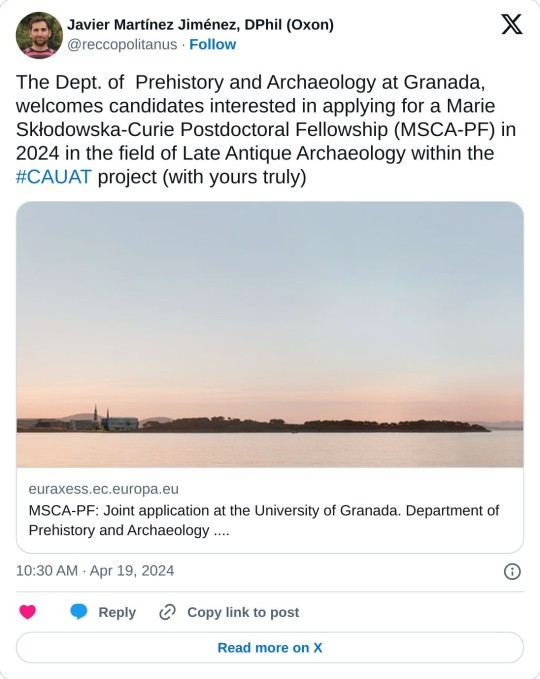
If anyone is interested in a two-year MSCA Postdoctoral Fellowship at the University of Granada within the field of late antique archaeology, please check this link with the basic information.
#Archaelogy#Acedemia#graduate job#postdoctoral job#late antiquity#if anyone applies and mentions they saw this on tumblr they'll get all my support forever
56 notes
·
View notes
Text
“We attempt to look at the sun for the first time and when we are far away, at least, we succeed. But the closer we approach the less we see it. And at last we see neither [sun] nor other things, since we have completely become the light itself, instead of an enlightened eye.”
— Damascius, Problems & Solutions Concerning First Principles, I 84
#classical philosophy#platonism#philosophy#neoplatonism#arete#virtue ethics#theurgy#contemplation#damascius#proclus#late platonism#late antiquity
30 notes
·
View notes
Text

Hypatia, Charles William Mitchell, 1885, Laing Art Gallery, Newcastle, Great Britain
#Hypatia#Alexandria#Roman Empire#ancient rome#late antiquity#Persecution of pagans#neoplatonism#philosophy#pagan#paganism#roman paganism#greek paganism#19th century art#painting#romanticism#neo classicism#art#art history#Laing Art Gallery#Newcastle#Great Britain
22 notes
·
View notes
Text
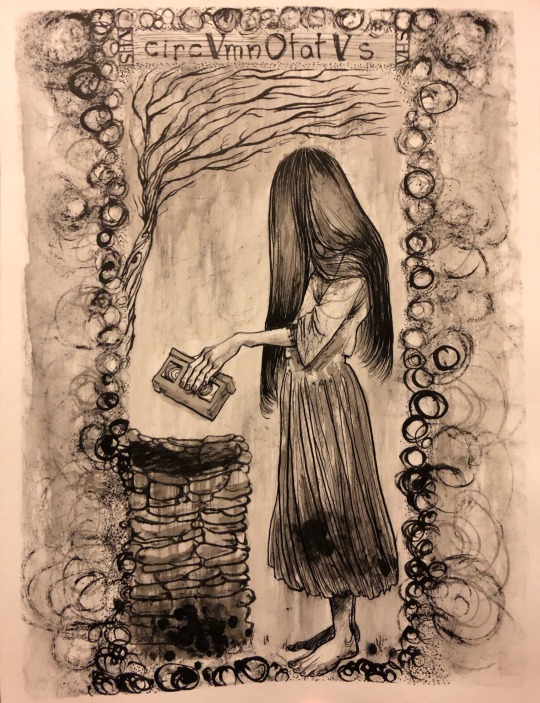
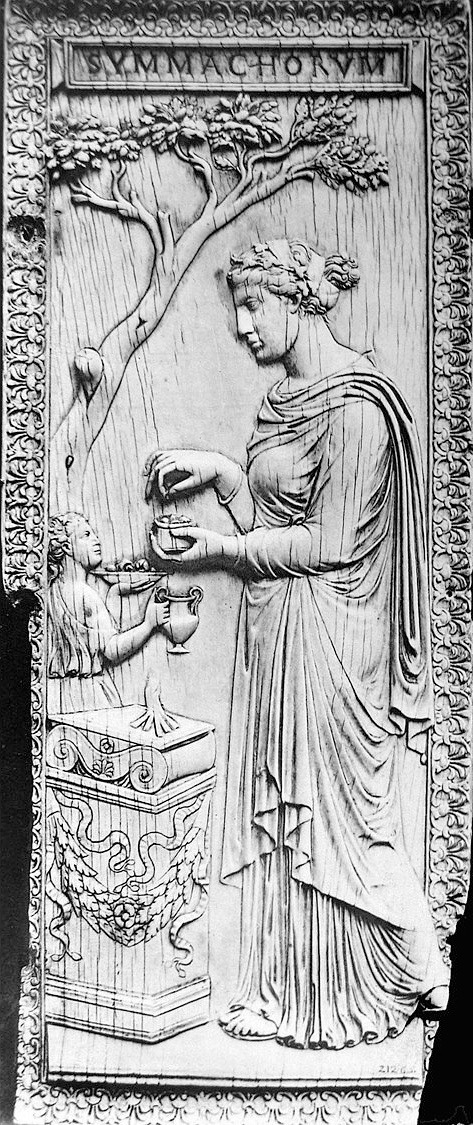
this is something i did (what feels like) a billion years ago in another life for a college art history final, the assignment was a pop culture adaptation of a work from one of the studied eras. Late Antiquity, right panel of the Symmachi–Nicomachi diptych. i remember there wasn't a good translation for the word "ring" in this context so i went with something that meant "to draw around" or "to encircle."
at the time a librarian friend asked if they could use it as promo material for their media preservation & digitization lab & of course i said yes, but i don't know if that ever panned out (i hope it did!!)
50 notes
·
View notes
Text
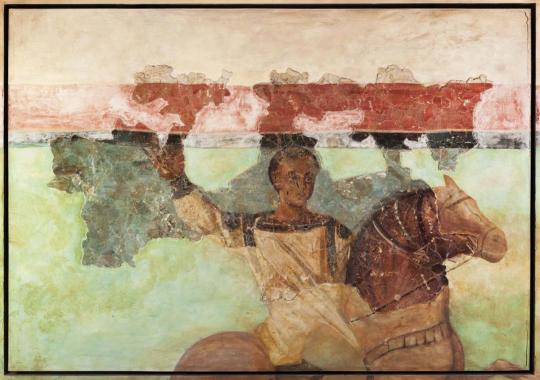

Late 4th century or 5th century (Later Roman Empire). Fresco on stucco representing a man riding a horse. Size: 80 x 160 cm.
Found in the Domus de l'Arxiu Administratiu, Barcelona, Catalonia. Nowadays in Museu d'Història de Barcelona.
#arts#arqueologia#barcelona#catalunya#late antiquity#later roman empire#roman#ancient rome#catalonia#archaeology#archeology#history#art history#travel#europe#wanderlust#fresco#painting#pintura
127 notes
·
View notes
Text
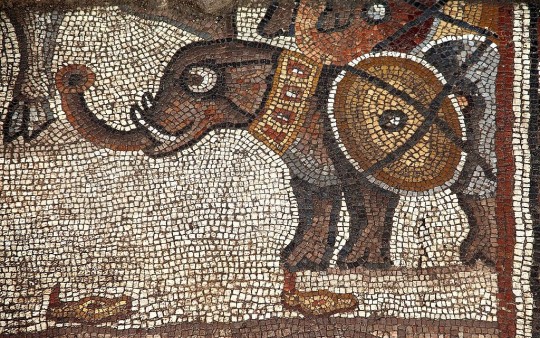
Elephants agog in the synagogue
This mosaic of a wide-eyed elephant was discovered by archaeologists in a fifth-century synagogue in Huqoq, Galilee. It is part of a scene where a white-haired Jewish leader confronts a general in Greek garb and his troops, including elephants. There has been a lot of debate about exactly who the two central figures are: was the warrior Alexander? Nero? Are they just symbolic and don't represent any particular incident? To add to the mystery, synagogues from this period rarely depicted non-Biblical events. Jodi Magness, who led the dig that uncovered the mosaic, argued that the elephants show this scene was not Biblical, since elephants do not obviously occur in the Bible (although ivory and some otherwise unidentified big beasts do crop up).
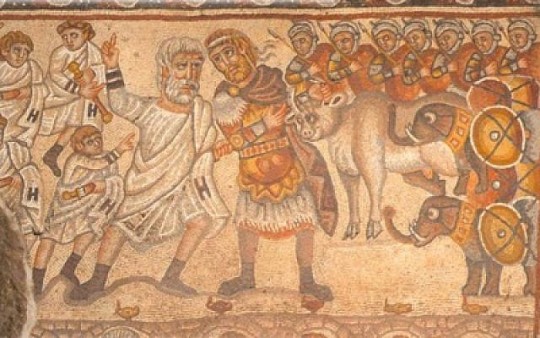
Whatever it depicts, the scene seems to suggest that there was a happy ending and that the war elephants were not deployed! Material: mosaic Date: late 4th or early 5th century AD Origin: Huqoq, Galilee Image source (x)
137 notes
·
View notes
Text


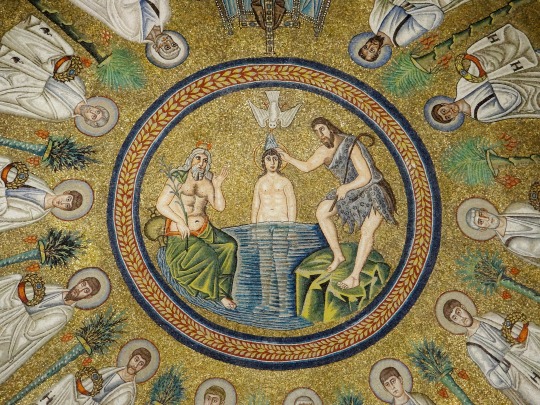
The Battistero degli Ariani (Baptistery of the Arians). It was built around the end of the 5th century by King Theodoric the Great.
Ravenna, Italy
#ravenna#italy#italia#baptistery#original photography#photography#travel#photographers on tumblr#lensblr#architecture#historical architecture#5th century#theodoric the great#ostrogoths#early christianity#late antiquity#church#church architecture#wanderingjana
45 notes
·
View notes
Text
Reading The Last Pagans of Rome by Alan Cameron, a birthday gift from my parents (who know me very well indeed). It's a hefty (~800 pages) tome, the fruit of decades spent studying late antiquity. Cameron argues that the so-called "pagan reaction" in the late fourth century is a scholarly mirage, and that the secular culture pagans supposedly defended fiercely was in fact shared by Christian elites as well. He sees the end of paganism not as an apocalyptic conflict, but as a gradual process marked by the slow demise of animal sacrifice and public cult rituals over the course of the fourth century. Whether you agree with him or not, he's assembled massive amounts of evidence, and he makes his case in elegant, thoughtful fashion. Definitely recommended for anyone interested in the period.
57 notes
·
View notes
Photo

Hermetica: The Ancient Greek and Latin Writings which contain Religious or Philosophic Teachings ascribed to Hermes Trismegistus
#hermetica#corpus hermeticum#hermeticism#hermetic philosophy#egyptian philosophy#greek philosophy#hermes#hermes trismegistus#mercurius#thoth#ascelipius#hellenistic#late antiquity#library of alexandria#greco-roman egypt#emerald tablet#gnosis#gnosticism
221 notes
·
View notes
Text
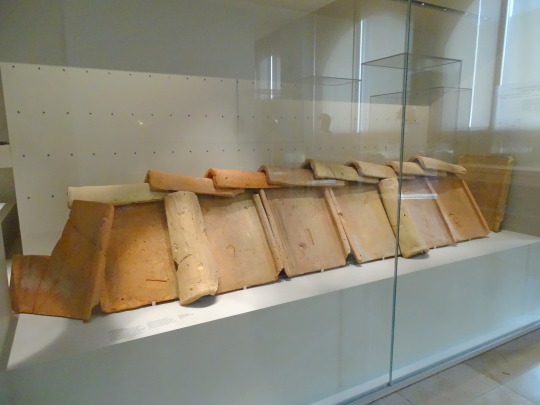
A burial covered with roof tiles (complete with paw marks from a dog) from a Late Roman cemetery in Rheinzabern, Rhineland-Palatinate.
Germanisches Nationalmuseum. Nuremberg, Germany 2023
#ancient rome#germania#burial#tomb#original photography#cemetery#photography#taphophile#taphophilia#photographers on tumblr#tombs#lensblr#late antiquity#germany#deutschland#rhineland#ancient history#ancient roman#artifact#nuremberg#museum#wanderingjana
37 notes
·
View notes